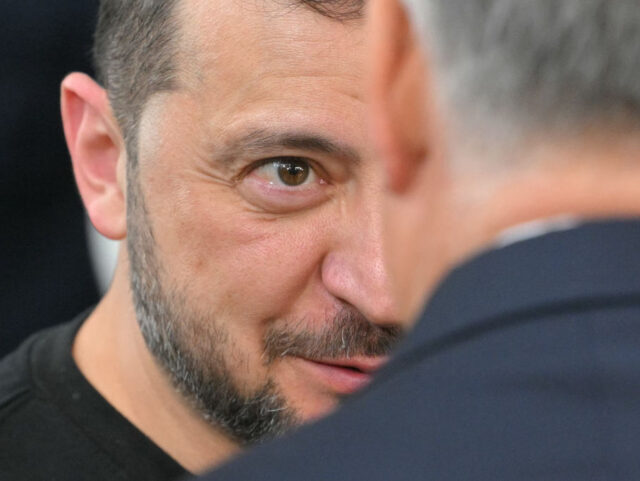President Volodymyr Zelensky wants NATO to deploy a “comprehensive” deterrent on Ukrainian soil so powerful it would prevent Russia from being able to pursue the war any further.
Ukraine’s President Zelensky has unveiled his much-hyped Victory Plan, revealing it to be a condensed list of longstanding Ukrainian demands, including immediate NATO membership, permission to use Western weapons to strike deep inside Russia. The wartime leader has been promoting this five-part plan around Western capitals for several weeks, including visits to the United States and the United Kingdom.
Having made his speech on Wednesday, Zelensky travelled to Brussels on Thursday to make the pitch again, directly to European and NATO leaders. Early signs, though, were that those decision-makers were unmoved, particularly on the NATO membership question. NATO’s new Secretary General Mark Rutte said on Thuirsday morning, per Deutsche Welle that: “I cannot today now exactly sketch out what the path [to membership] will be, but I am absolutely confident that in the future, Ukraine will join us… Obviously we want to be in a place where Zelenskyy and Ukraine, from a position of strength, is able to start talks with Russia”.
While none of his supporters have exactly gone public with absolute acceptance of his proposals yet, and his diplomacy tour has failed to elicit much in the way of fresh support, the Ukrainian leader went ahead and made most of the content of the plan known in a speech to the Ukrainian parliament on Wednesday. The speech revealed the extent of the enormous scope of the asks he is making of Western allies, even if most of the points are already long-term Ukrainian demands.
President Zelensky said his allies should be willing to show their total support for Ukraine by issuing an “unconditional invitation right now” for the country to join NATO. This is no small ask: Ukraine has been campaigning to join NATO since the war began, but has been repeatedly rebuffed as not ready for membership. Quite beyond the technical demands of membership, there is every possibility making Ukraine a full NATO member would put every other member of the alliance into a de-facto state of war with Russia, which is certainly against stated American foreign policy.
President Zelensky said: “Ukraine proposes to deploy a comprehensive non-nuclear strategic deterrence package on its land, which will be sufficient to defend Ukraine against any military threat from Russia and which will narrow the variability of Russia’s actions to two prospects: either to join an honest diplomatic process for a fair conclusion of the war or to lose the ability to continue its aggressive war due to the implementation of the deterrence package provided to Ukraine”.
What exactly the deterrence would be — other than non-nuclear — was not stated and President Zelensky said it was outlined in a secret annexe to the plan. In all, he said, Russia must be “forced” into peace.
While other points in Zelensky’s plan include economic growth, including foreign investment in Ukrainian industry and natural resources, and more sanctions on Russia, another military demand of his Western backers is permission to use the long-range missiles the country has already been given by NATO members to strike deep inside Russian territory.
At the moment, the missiles have been given on agreement from countries like the U.S., UK, and France that they shoudl only be used to strike close to the front lines, or within Russian-occupied territory, suich as Crimea, where they have been used to catastrophic effect against Russian forces already. Yet many of the deadliest strikes against Ukraine are now with long-range glide bombs, caried to launch-height by bomber aircraft from airbases deep inside the Russian Federation. These bombs are difficult to shoot down and it is the airbases the aircraft operate from that Ukraine says it wants to strike, to stop the attacks before they even begin.
Washington is deeply sceptical of the plan, however, fearing missile strikes deep inside Russia could be a provocation that pushes President Vladimir Putin over the edge.
The problem for Ukraine remains that so many of the things President Zelensky needs to get the war end he deems acceptable are not what his Western backers are comfortable or capable of giving. While NATO has said it wants to make Ukraine a member it has also been clear this must be after fighting has ended, when it is no longer occupied by a foreign power, and when it meets the alliance’s other membership requirements, not before.
While what exacftly is meant by NATO bringing a “comprehensive non-nuclear strategic deterrence package” to Ukraine is unclear, but could mean either a considerable boost to Ukraine’s own armed forces, or the deployment of NATO troops to Ukraine, a return to the Cold War days of massive armies in Western Germany facing down the Soviets.

COMMENTS
Please let us know if you're having issues with commenting.